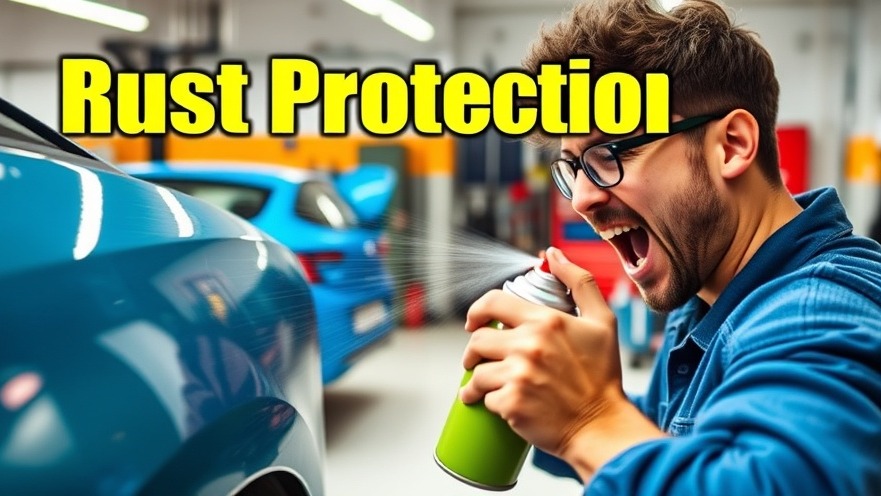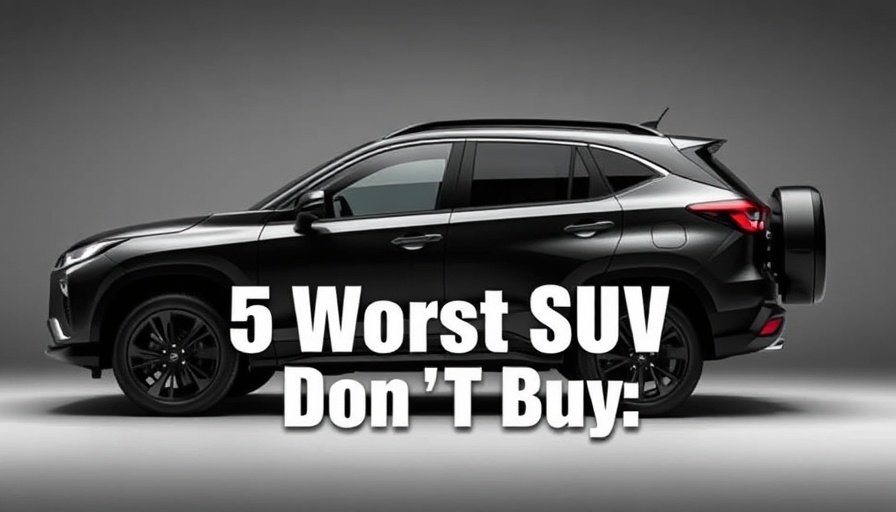
Protecting Your Investment: Why Preventing Rust is Crucial
Rust isn’t just a minor annoyance; it’s a formidable enemy of vehicles everywhere. It doesn't discriminate between a high-end luxury car, like a Bentley, or an everyday truck; rust will find a way to attack. With the right preventive measures, you can protect your car and extend its life significantly. Awareness and action against rust can help prevent small issues from evolving into serious damage that requires expensive repairs. That’s why these seven DIY methods are invaluable for every automobile owner.
In 'How To Prevent Your Car From Rusting (7 DIY Methods)', the discussion dives into effective tips for maintaining your vehicle's integrity, inspiring us to explore these insights further.
Method 1: Regular Car Washes - A Simple Yet Effective Strategy
One of the easiest ways to fight rust is by washing your car regularly. Aim for at least once a month, or more often if you live in a humid area. This routine should not just involve washing the surface; you also need to give attention to the undercarriage. Dirt, salt, and grime can trap moisture against your vehicle, creating the perfect environment for rust to thrive. Remember to rinse thoroughly, especially in hidden areas like wheel wells and under body moldings. This simple step helps significantly in slowing down rust formation.
Method 2: Waxing - Adding a Protective Shield
Applying a protective wax coating is more than just a beauty treatment for your car. It forms a barrier between the paint and harmful elements like water and salt. Invest in a good synthetic wax for longer-lasting results, and make sure to wax every 3-4 months. Pay special attention to areas that are vulnerable, like inside wheel arches and around headlights. Regular waxing can greatly diminish the chances of rust taking hold.
Method 3: Inspecting Paint Chips and Scratches
Don’t underestimate minor scratches and paint chips; they can quickly escalate into rust problems. After any minor damage, it’s crucial to inspect and repair affected areas using touch-up paint kits available at auto parts stores. Additionally, using a rust converter can halt the spread if you catch a rust spot early on. Maintaining the paint job is a key step in keeping your car rust-free.
Method 4: Park in a Dry, Covered Space
Where you park your car matters significantly in preventing rust. Whenever possible, park in covered areas like garages or carports to shield your vehicle from moisture. Should parking indoors not be an option, a good-quality waterproof, and breathable car cover is essential. Remember, ensuring good ventilation in your parking area can also help in reducing humidity-long term.
Method 5: Limiting Exposure to Salt and Chemicals
During winter or in coastal regions, extra care must be taken to protect your car from corrosive materials like road salt. If you're in a snowy area, rinse your car after every trip to remove any salt residue, especially from the undercarriage. Alongside this, consider applying a salt-resistant coating to act as an extra shield. Protecting your car from these harsh elements is a necessary step towards avoiding future rust problems.
Method 6: Replace Worn Door Seals
Old door seals may appear to be a minor issue, but they can let water sneak into areas where it can cause serious rust damage. If you notice any cracks or damage, replace them promptly. Moreover, ensure that any drain holes at the bottom of doors are cleared to prevent trapped water, contributing to rust development. Investing in good-quality rubber mats can help to mitigate moisture buildup inside the vehicle.
Method 7: The Secret Weapon - WD40
Utilized correctly, WD40 can be your best friend in the fight against rust. This water dispersant prevents moisture accumulation by being sprayed in hidden spots, such as undercarriages, hinges, and joints. It's lightweight, easy to apply, and provides protection without leaving behind greasy residues. It’s simple, inexpensive, and effective, making it a perfect addition to your rust prevention toolkit.
Conclusion: Taking Action for Lasting Results
In summary, protecting your car from rust not only prolongs its lifespan but also preserves its resale value. Implementing these seven DIY methods can be both straightforward and effective, requiring only a bit of time and effort. The steps outlined—from regular washings to utilizing WD40—can save you from expensive repairs down the line. Protect your investment; take action today to keep your vehicle rust-free!
 Add Row
Add Row  Add
Add 




 Add Row
Add Row  Add
Add 

Write A Comment